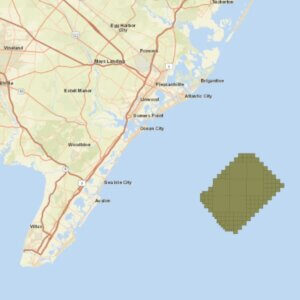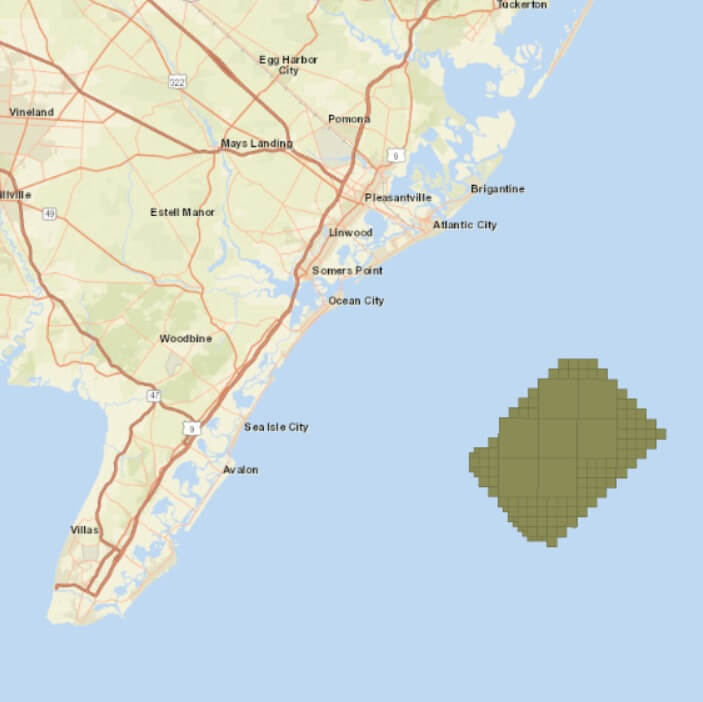Monmouth University scientists are conducting a first-of-its-kind study that uses genetic materials extracted from the ocean to determine whether the development of turbines and power infrastructure has an impact on fish populations and demographics in the Ocean Wind 1 project area, located off the southern New Jersey coast. Through a $1.3 million agreement with Ørsted, the team will sample the waters before, during and after construction for DNA shed by marine life in the area and compare the findings with data gathered through traditional trawls and fish tagging methods.
The project is the first to monitor potential changes to fisheries in a wind energy area using environmental DNA, or “eDNA.” This crime scene investigation-style approach to marine detection has emerged as a more humane and less expensive means of studying fish populations than traditional methods that require their capture. As fish swim through the waters, they leave behind dandruff-like cells and bodily fluids that can be analyzed and matched to the genetic barcodes of others to determine their species.
“Sampling for eDNA is especially effective for detecting uncommon, endangered or otherwise hard to catch species in the waters,” said Monmouth University Endowed Professor of Marine Science and project co-lead Jason Adolf. “There’s a degree of luck involved in trawling for fish, just as when you cast a line at your local lake. The genetic materials in the water can tell you a lot about what you didn’t catch.”
While eDNA is being increasingly used by scientists to determine the presence or absence of species in water bodies, recent research by Monmouth, Rockefeller University and the New Jersey Department of Environmental Protection found that the amounts of DNA floating in the water could also be used to estimate the biomass of fish in the area.
Adolf, project co-lead and Associate Professor of Biology Keith Dunton, and Monmouth University scientists will analyze samples collected during quarterly cruises within the wind energy area. The eDNA research is part of a larger fisheries monitoring effort funded by Ørsted that will also include the use of trawls, gillnets and acoustic telemetry (monitoring of tagged fish) by Rutgers University and Delaware State University scientists. The data will offer insights as to what impacts can be expected as offshore wind projects progress in the Mid-Atlantic.
“Currently, eDNA research needs to be done in conjunction with traditional fisheries sampling until we better understand the relationship between the data gathered by these methods,” Dunton said. “In the long run, however, eDNA may become a more common tool that decreases our dependency on capture and extractive methods and allows us to sample fish more broadly than is currently possible through traditional trawl surveys.”

Developed by Ørsted and PSEG, the 1,100 MW Ocean Wind 1 will be located 15 miles off the coast of southern New Jersey. At 1,100 MW, Ocean Wind 1 will provide clean energy to 500,000 homes in New Jersey, deliver thousands of jobs, and advance supply chain initiatives while helping the state meet its clean energy goals.
“We are thrilled to conduct this environmental monitoring with such a highly qualified research team and their fishing industry partners,” Ørsted Offshore North America Senior Environment and Permitting Specialist Gregory DeCelles said in a press release announcing the research. “This important study will collect a wealth of valuable data on important commercial and recreational species and can serve as a model for accomplishing fisheries monitoring at offshore wind sites on a regional scale.”
The eDNA research team also includes Saint Anselm College Assistant Professor Shannon O’Leary, who will conduct laboratory work to process and analyze the genetic materials captured in the samples. The monitoring work began in December and will continue until two years after construction is complete (currently anticipated to be 2026).

